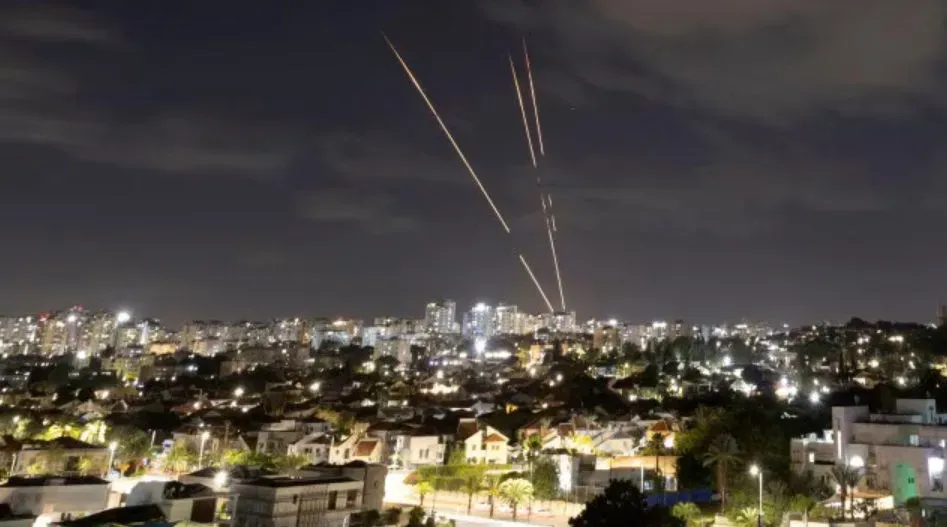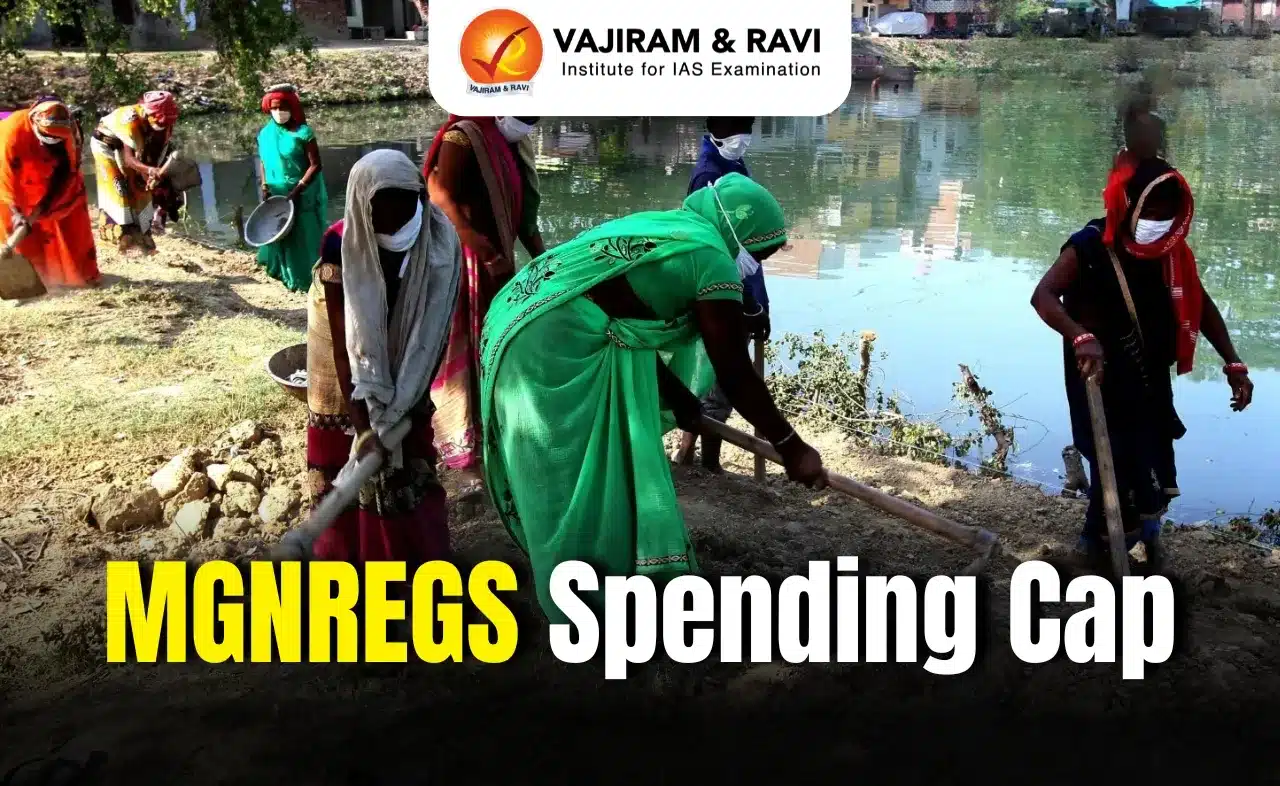What’s in today’s article?
- Why in News?
- Red Sea
- Escalation of Conflict in West Asia
- Impact on India
- Impact on shipping sector
Why in News?
As tensions in West Asia escalated following Iran’s missile attack on Israel, India called for restraint and the protection of civilians.
The Ministry of External Affairs (MEA) issued a travel advisory urging Indian nationals to avoid non-essential travel to Iran and for those residing there to stay vigilant. Similarly, the Indian embassy in Tel Aviv advised Indian citizens to adhere to local safety protocols and stay in touch with the embassy.
Red Sea
- The Red Sea is located between Africa and Asia, and is an inlet of the Indian Ocean:
- South – Connects to the Indian Ocean through the Bab-el-Mandeb strait and the Gulf of Aden
- North – Contains the Gulf of Aqaba and the Gulf of Suez, which lead to the Suez Canal

Escalation of Conflict in West Asia
- The conflict in West Asia has intensified as Iran launched missiles on Israel, with the Israeli military shifting its focus from Hamas in Gaza to the more formidable Hezbollah in Lebanon.
- Recently, Iran launched a barrage of missiles on Israel overnight. Now, the analysts fear that Israel would retaliate thereby widening of the conflict in the region.
- This follows the assassination of Hezbollah leader Hassan Nasrallah, leading to further instability in the region.
- The widening of the conflict has increased the risk of trade disruptions, as Hezbollah shares close ties with the Houthi rebels in Yemen, who are responsible for the majority of the attacks on ships traversing the Red Sea route.
Impact on India
- Fears of Protracted Red Sea Disruption
- Exporters have long been concerned about a direct conflict between Israel and Iran, fearing it would cause a prolonged disruption of the Red Sea shipping route.
- India is especially vulnerable to these disruptions, as its trade with Europe, the US, Africa, and West Asia—valued at over $400 billion in FY23—relies heavily on the Suez Canal and Red Sea routes.
- The involvement of Hezbollah’s allies, such as the Houthi rebels in Yemen, heightens the risk of attacks on ships using this critical trade passage.
- Impact on Indian Petroleum Exports
- In August 2024, India’s exports fell by 9%, primarily due to a sharp 38% drop in petroleum product exports, which fell to $5.95 billion from $9.54 billion in August 2023.
- Rising shipping costs and the crisis in the Red Sea have led importers to seek alternative sources, impacting Indian exporters’ profitability, particularly standalone refiners.
- European Market Challenges
- Europe, which accounts for 21% of India’s petroleum exports, has been affected by rising shipping costs.
- A Crisil report from February 2024 warned that these additional costs would reduce profit margins for petroleum exports, compounding the challenges faced by Indian exporters.
- India’s overall exports to the European Union increased by 6.8% this year, but sectors like machinery, steel, gems, jewellery, and footwear have faced declines.
- The rising freight costs are expected to further strain Indian industries reliant on high-volume, low-value exports, making it difficult for them to stay competitive.
- Silver lining – Trade Opportunities in West Asia
- Despite the conflict, India’s trade with Gulf Cooperation Council (GCC) countries has grown by 17.8% between January and July 2024, according to a Global Trade Research Initiative (GTRI) report.
- India’s exports to Iran also increased by 15.2% during this period, benefiting from the neutrality of regional players such as Saudi Arabia, the UAE, Kuwait, and Qatar, who have stayed out of the conflict.
- Risk to India-Middle East-Europe Economic Corridor (IMEC)
- The ongoing conflict in West Asia could hinder the development of the IMEC, a strategic project announced during the G20 in 2023.
- The IMEC plan comprises an Eastern Corridor connecting India to the Gulf region and a Northern Corridor connecting the Gulf region to Europe.
- It will include a railway and ship-rail transit network, as well as road transport routes.
- The IMEC aims to reduce reliance on the Suez Canal by creating faster trade routes through a rail and ship network connecting India to the Gulf and Europe.
- However, the widening conflict in the region threatens to delay or complicate the corridor’s progress, casting uncertainty over its future.
- The ongoing conflict in West Asia could hinder the development of the IMEC, a strategic project announced during the G20 in 2023.
Impact on shipping sector
- Surge in Shipping Costs Due to Longer Trade Routes
- According to the International Monetary Fund (IMF), trade volume through the Suez Canal dropped by 50% year-over-year in early 2024, while trade transiting around the Cape of Good Hope surged by 74%.
- This shift is due to disruptions in key shipping routes, particularly through the Suez Canal and Red Sea, forcing vessels to take longer paths, which has increased shipping costs by 15-20%.
- These rising costs are hitting Indian exporters hard, especially those dealing in low-margin, labour-intensive goods like textiles, garments, and low-end engineering products.
- Calls for an Indian Shipping Line
- Indian exporters are urging the government to establish an Indian shipping line to reduce reliance on foreign firms.
- The global shipping lines are seeing their profits soar amid the Red Sea crisis.
- This push comes as India’s outward remittance on transport services exceeded $109 billion in 2022, with rising exports contributing to higher costs.
- Many exporters believe an Indian shipping line would benefit MSMEs, reducing foreign shipping lines’ ability to dictate terms, especially during crises.
Q.1. How is the Israel-Iran conflict affecting Indian exports?
The conflict has caused a 9% drop in India’s exports, particularly a 38% decline in petroleum product exports, due to rising shipping costs and trade route disruptions.
Q.2. What is the IMEC, and how might it be impacted?
The India-Middle East-Europe Economic Corridor (IMEC) is a strategic trade route project. The ongoing conflict threatens its development, complicating faster trade connections between India, the Gulf, and Europe.
Source: West Asia on edge, India calls for restraint, says avoid Iran travel | Indian Express
Last updated on June, 2025
→ UPSC Notification 2025 was released on 22nd January 2025.
→ UPSC Prelims Result 2025 is out now for the CSE held on 25 May 2025.
→ UPSC Prelims Question Paper 2025 and Unofficial Prelims Answer Key 2025 are available now.
→ UPSC Calendar 2026 is released on 15th May, 2025.
→ The UPSC Vacancy 2025 were released 1129, out of which 979 were for UPSC CSE and remaining 150 are for UPSC IFoS.
→ UPSC Mains 2025 will be conducted on 22nd August 2025.
→ UPSC Prelims 2026 will be conducted on 24th May, 2026 & UPSC Mains 2026 will be conducted on 21st August 2026.
→ The UPSC Selection Process is of 3 stages-Prelims, Mains and Interview.
→ UPSC Result 2024 is released with latest UPSC Marksheet 2024. Check Now!
→ UPSC Toppers List 2024 is released now. Shakti Dubey is UPSC AIR 1 2024 Topper.
→ Also check Best IAS Coaching in Delhi





















